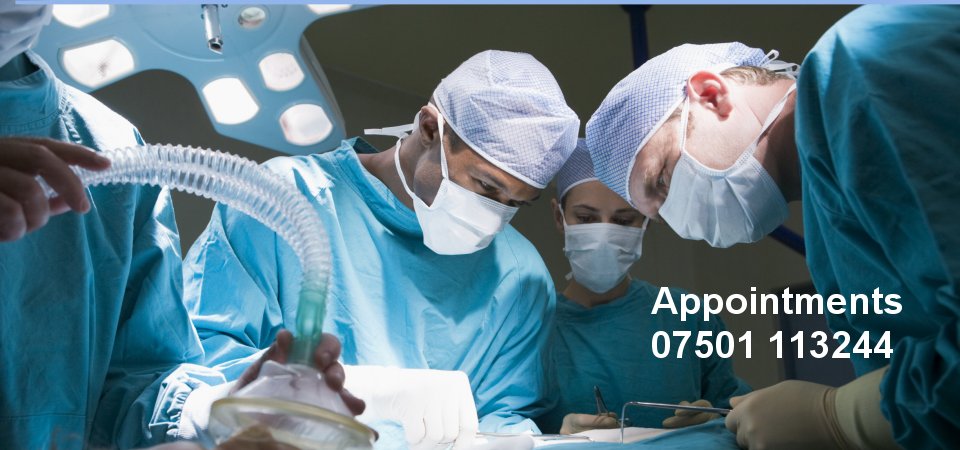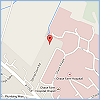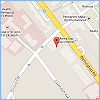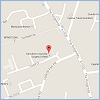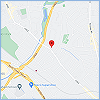The liver produces bile, which is stored and concentrated in the gallbladder. When we eat fat a special chemical signal causes the gallbladder to contract, in doing so squirting the bile down the bile ducts and into the intestine. Bile is rather like washing-up liquid, which helps us to digest and absorb the fat content of our food. Because the bile is concentrated in the gallbladder this sometimes results in cholesterol crystals forming and over the years this can result in gallstones in the gallbladder. When the gallbladder contracts in response to a fatty meal, the gallstones can act like a ball-valve and obstruct the outflow from the gallbladder to the bile ducts resulting in colicky pains in the upper part of the abdomen under the right side of the ribs (biliary colic). Sometimes the gallbladder wall can become infected and inflamed resulting in the same symptoms, but more prolonged and with an associated temperature (cholecystitis). Rarely, gallstones can travel down the bile ducts blocking the outflow to the intestine causing either yellow jaundice or a serious inflammation of the pancreas gland (pancreatitis). However, there are plenty of people who have gallstones which give no symptoms whatsoever, and thus not all gallstones require an operation.
Surgical treatment of gallstones
If you do have gallstones causing symptoms then if you are fit enough for a general anaesthetic you will require surgical treatment of your gallstones. In the 1980’s non-surgical treatments such as dissolving therapy and shock-wave therapy to break-up the stones were tried, but both were unsuccessful. The surgical treatment of gallstones involves removing the gallbladder and gallstones together (cholecystectomy). Originally, this used to be performed with a long cut under the rib cage on the right side of the abdomen (open cholecystectomy), but now this is performed more successfully with keyhole surgery (laparoscopic cholecystectomy). Large studies seem to show that the laparoscopic approach is just as safe as the traditional open approach. During a laparoscopic cholecystectomy tiny cuts are made to introduce the telescope (laparoscope) and the working instruments, and then the gallbladder and gallstones are removed, usually through one of these small cuts in the navel. It is my practice additionally to put some dye into the bile ducts at the time of operation (cholangiogram) to make sure that there are no stones which have escaped from the gallbladder and are floating free in the bile duct, which could lead to later jaundice or pancreatitis and if there are significant sized bile duct gallstones these may be removed at the same operation. Also the cholangiogram ensures that I am totally sure of the anatomy before removing the gallbladder, reducing the risk of bile duct injuries.
Are there any complications of surgery?
All surgical operations have complications, though thankfully this is very low. Sometimes the gallbladder is very stuck-down to other structures and just cannot be removed by the laparoscopic approach. If this is the case then under the same anaesthetic we will revert to the open approach (this only occurs in about two per cent of cases). The most common complication is an infection of the skin around the navel where the gallbladder was removed. This can be easily treated with antibiotics. A certain amount of clear fluid weeping is normal. Where the gallbladder is removed the strong muscular layers of the abdominal wall are stitched together underneath the skin stitches and it is possible to get a hernia at this site, particularly if there is an infection. You will therefore be advised not to lift anything heavy for the four weeks’ after your operation. There are much rarer complications and these include damage to the bile ducts, damage to major blood vessels or the bowel when the telescopes are introduced, though this occurs in less than one in a thousand cases.
Can I live without my gallbladder?
Yes, you are perfectly able to continue a normal life eating whatever you like without a gallbladder. The bile, which would normally be stored in the gallbladder, is simply stored in the bile ducts, which slightly swell up to accommodate this volume over the three or four months after surgery. During this period some people report a slightly looser stool than normal, particularly if you are prone to an erratic or irritable bowel.
What will be the arrangements for my laparoscopic cholecystectomy?
You will be admitted to hospital on the same day as your operation, a few hours’ beforehand in order to settle you into your room. Your operation will take approximately an hour and you will recover in the Theatre Recovery Room before coming back to your room on the ward. If you feel able, you will be encouraged to drink and eat as soon as you like after the surgery and you will be discharged home usually on the next morning. If you required an open cholecystectomy, then you are likely to stay in hospital longer.
Is there anything I need to do before/after my operation?
We will need to take a blood test in preparation for your operation within the week before your surgery. On the day of your operation, you must not eat for six hours before the planned time of your operation, but you can drink water up to 2 hours before (but absolutely nothing within 2 hours of your proposed operation time). If you take Aspirin to thin the blood, you must stop this seven days’ before the operation, and similarly with Warfarin, but please inform Mr Warren if this is the case. If you are diabetic you must not have your insulin or diabetic tablet on the day of your operation when you are fasting, but if you take other medications regularly (e.g. heart, blood-pressure, or medications for breathing) then you must take these medications on the morning of your operation as usual. If you are any doubt, contact Mr Warren’s office for advice.
It is sensible to buy some painkillers over the counter to have available for when you return home after your operation (although you will be offered a short supply when you leave the hospital but this is quite expensive). I would suggest you buy some Ibuprofen (400mg three times daily – so long as it doesn’t irritate your stomach), Cocodamol (1-2 tablets up to 4 times daily) and you can take both these tablets together. As the Cocodamol can cause constipation buy some Lactulose or Fybogel to take twice per day. Paracetamol is a weaker alternative to the Cocodamol.
When can I resume normal activity?
If your operation is completed in the laparoscopic way there is still going to be discomfort in the post-operative period since you have had exactly the same operation to remove your gallbladder, but just with smaller cuts. You might expect, therefore, to have discomfort for up to ten to fourteen days during which time you will be off work. Gradually you will be able to return to your normal lifestyle and most people return to work at three weeks. Most people are able to drive after seven days, if you are able to perform an emergency-stop. However, you will still get twinges of discomfort after this and you will feel bloated for perhaps a few weeks.
You may eat any foods you wish following your surgery, but remember that a low fat diet is a healthy diet. You must not lift heavy weights for six weeks’ after your operation. The small cuts are closed with an absorbable dissolving stitch and thus you will not require any stitches to be removed. After the first twenty-four hours, you will be able to have a shower or bath as normal.
Any questions or advice regarding timings and preauthorisation
Always contact my office 07501 113244 (not The Kings Oak Hospital) to advise me of your pre-authorisation number well before your operation and to confirm your operation date and timing
If post operatively you experience any problems please contact my office on 07501 113244 during office hours. Out of office hours please contact either the Wellington Hospital on 0207 483 5148 The Kings Oak Hospital on 0208 370 9500 or The Cavell Hospital on 0208 366 2122 and ask to be put through to the ward
